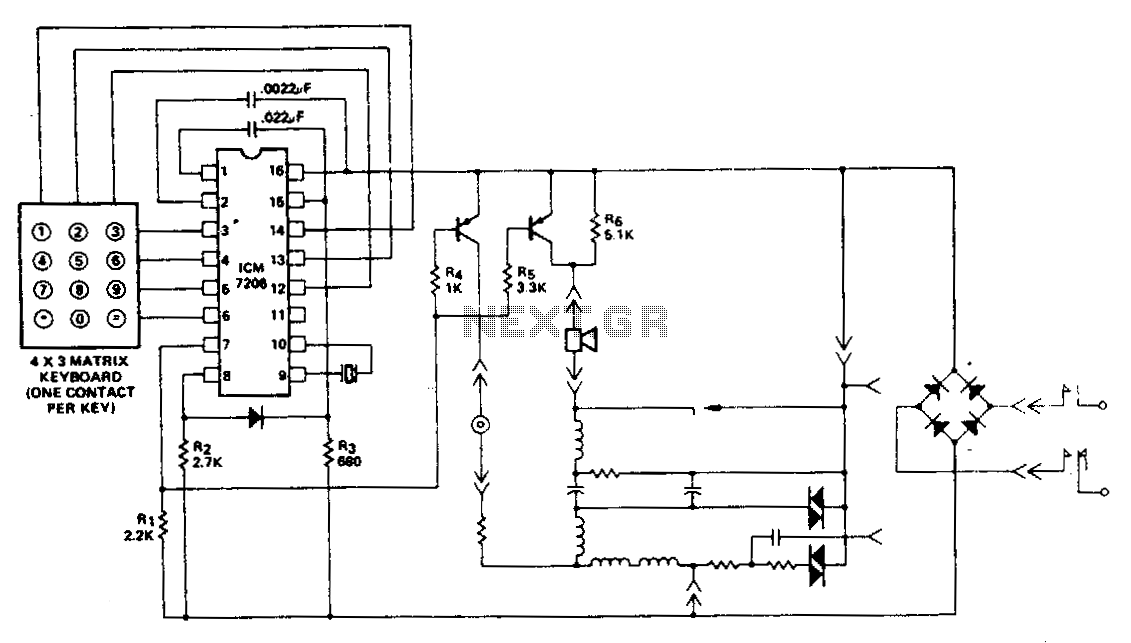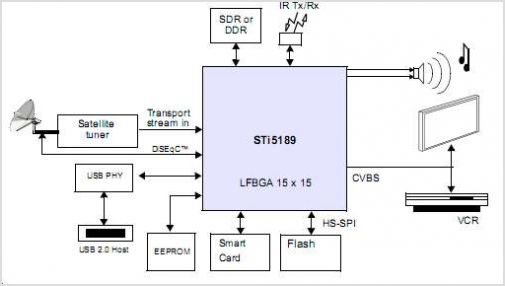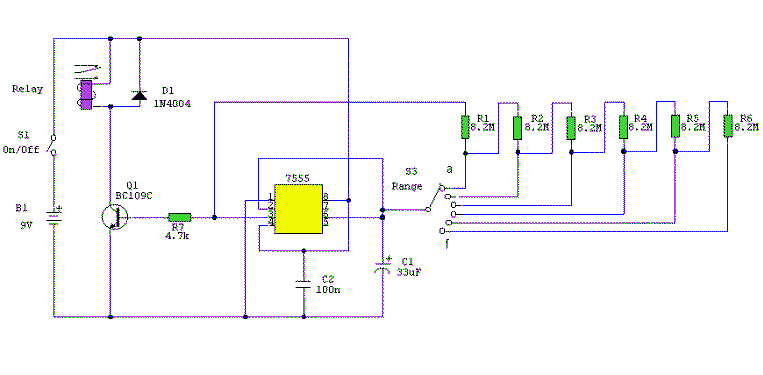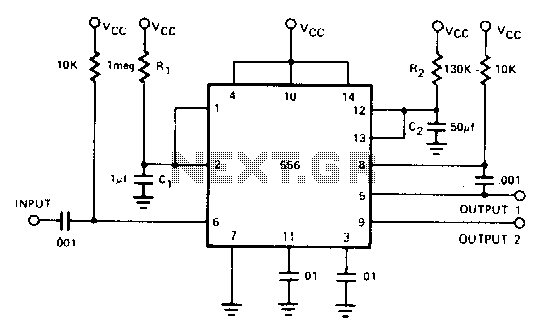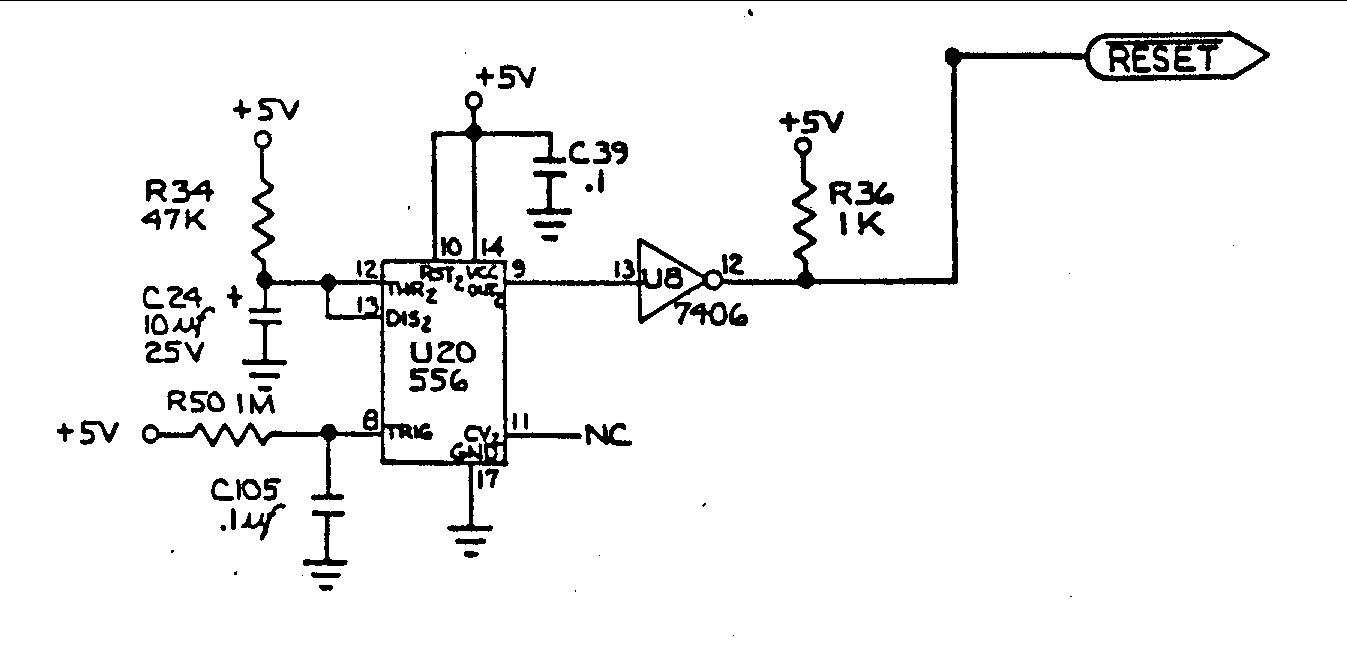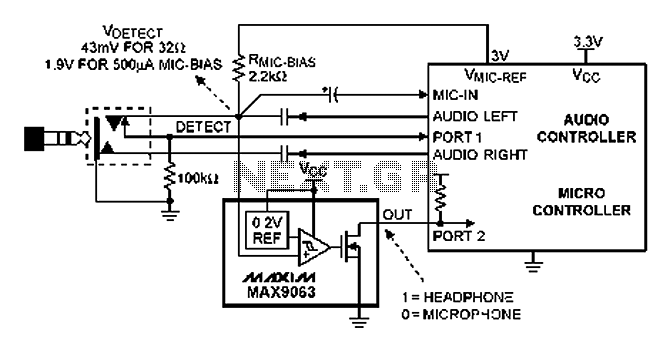
Set Timing Calculator With The LM555IC
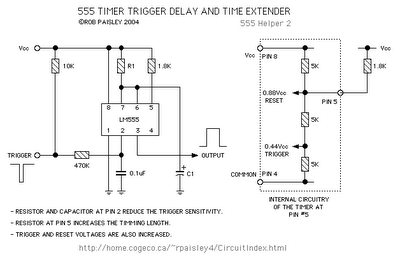
The following circuit illustrates a Set Timing Calculator Circuit. This circuit is based on the LM555 integrated circuit. Features include the provision of a delay of approximately...
The Set Timing Calculator Circuit utilizing the LM555 integrated circuit (IC) is designed to generate precise time delays based on external component values. The LM555 is a versatile timer IC that can be configured in various modes, including monostable and astable operation. In the monostable configuration, the circuit generates a single output pulse of a specific duration upon receiving a trigger signal.
In this circuit, the timing interval is determined by the resistor (R) and capacitor (C) values connected to the LM555. The time delay (T) can be calculated using the formula:
T = 1.1 × R × C
Where:
- T is the time delay in seconds,
- R is the resistance in ohms,
- C is the capacitance in farads.
The components selected for R and C will dictate the length of the delay. For example, if a resistor of 100 kΩ and a capacitor of 10 µF are used, the calculated delay would be approximately 1.1 seconds.
The circuit typically includes a trigger input that activates the timing sequence. When a low voltage signal is applied to this input, the output of the LM555 goes high, and the timing cycle begins. After the designated time interval, the output returns to its low state. This behavior makes the circuit suitable for applications such as timers, pulse generators, and delay circuits in various electronic projects.
Additional components may include diodes for protection against reverse polarity and capacitors for noise filtering to ensure stable operation. The circuit can be powered using a standard DC voltage supply, typically ranging from 5V to 15V, depending on the specific requirements of the application. Proper layout and connection of components are crucial for optimal performance and reliability of the timing calculator circuit.The following circuit shows about Set Timing Calculator Circuit. This Circuit based on the LM555IC. Features: provide a delay of approximately .. 🔗 External reference
The Set Timing Calculator Circuit utilizing the LM555 integrated circuit (IC) is designed to generate precise time delays based on external component values. The LM555 is a versatile timer IC that can be configured in various modes, including monostable and astable operation. In the monostable configuration, the circuit generates a single output pulse of a specific duration upon receiving a trigger signal.
In this circuit, the timing interval is determined by the resistor (R) and capacitor (C) values connected to the LM555. The time delay (T) can be calculated using the formula:
T = 1.1 × R × C
Where:
- T is the time delay in seconds,
- R is the resistance in ohms,
- C is the capacitance in farads.
The components selected for R and C will dictate the length of the delay. For example, if a resistor of 100 kΩ and a capacitor of 10 µF are used, the calculated delay would be approximately 1.1 seconds.
The circuit typically includes a trigger input that activates the timing sequence. When a low voltage signal is applied to this input, the output of the LM555 goes high, and the timing cycle begins. After the designated time interval, the output returns to its low state. This behavior makes the circuit suitable for applications such as timers, pulse generators, and delay circuits in various electronic projects.
Additional components may include diodes for protection against reverse polarity and capacitors for noise filtering to ensure stable operation. The circuit can be powered using a standard DC voltage supply, typically ranging from 5V to 15V, depending on the specific requirements of the application. Proper layout and connection of components are crucial for optimal performance and reliability of the timing calculator circuit.The following circuit shows about Set Timing Calculator Circuit. This Circuit based on the LM555IC. Features: provide a delay of approximately .. 🔗 External reference
